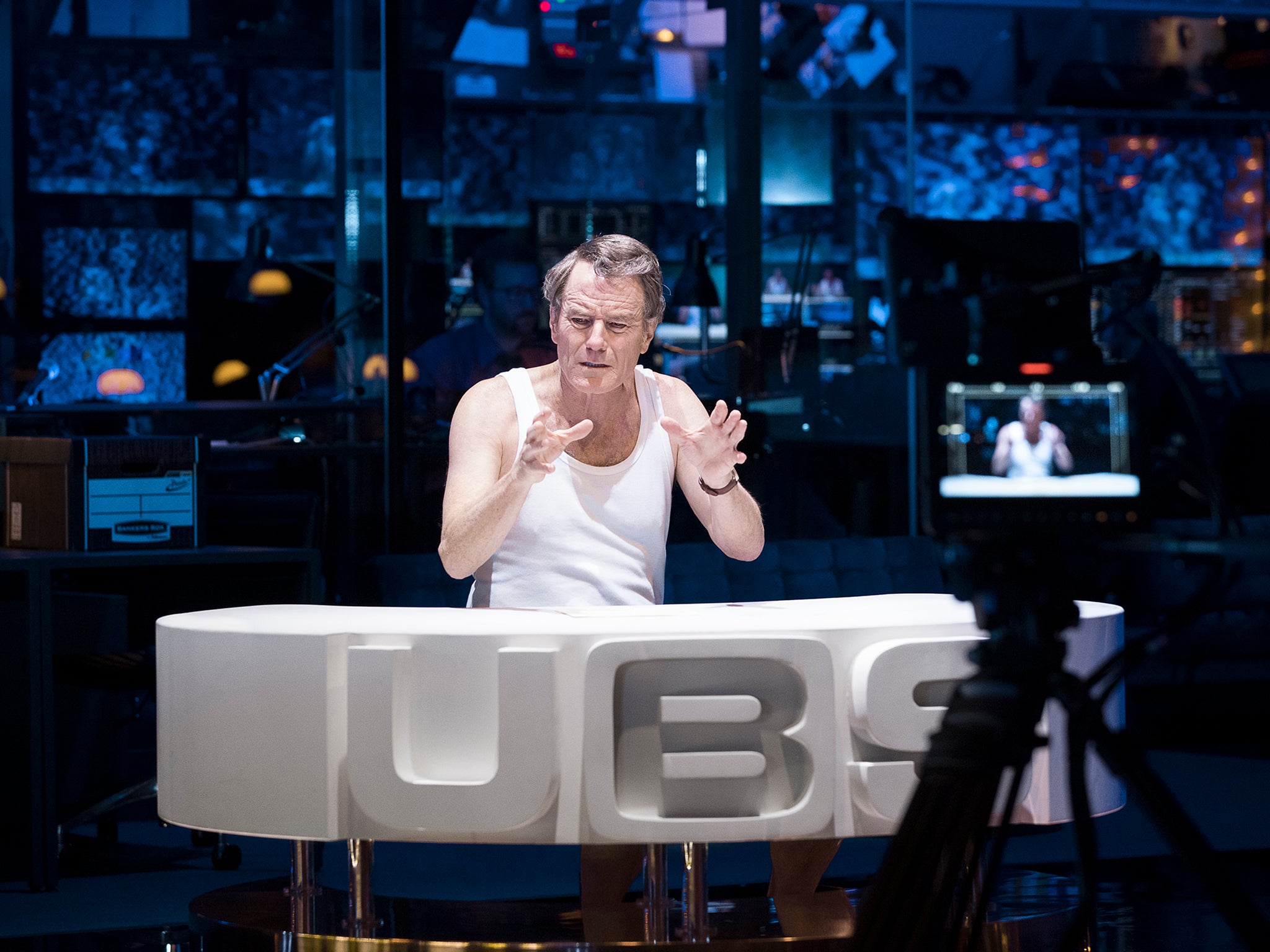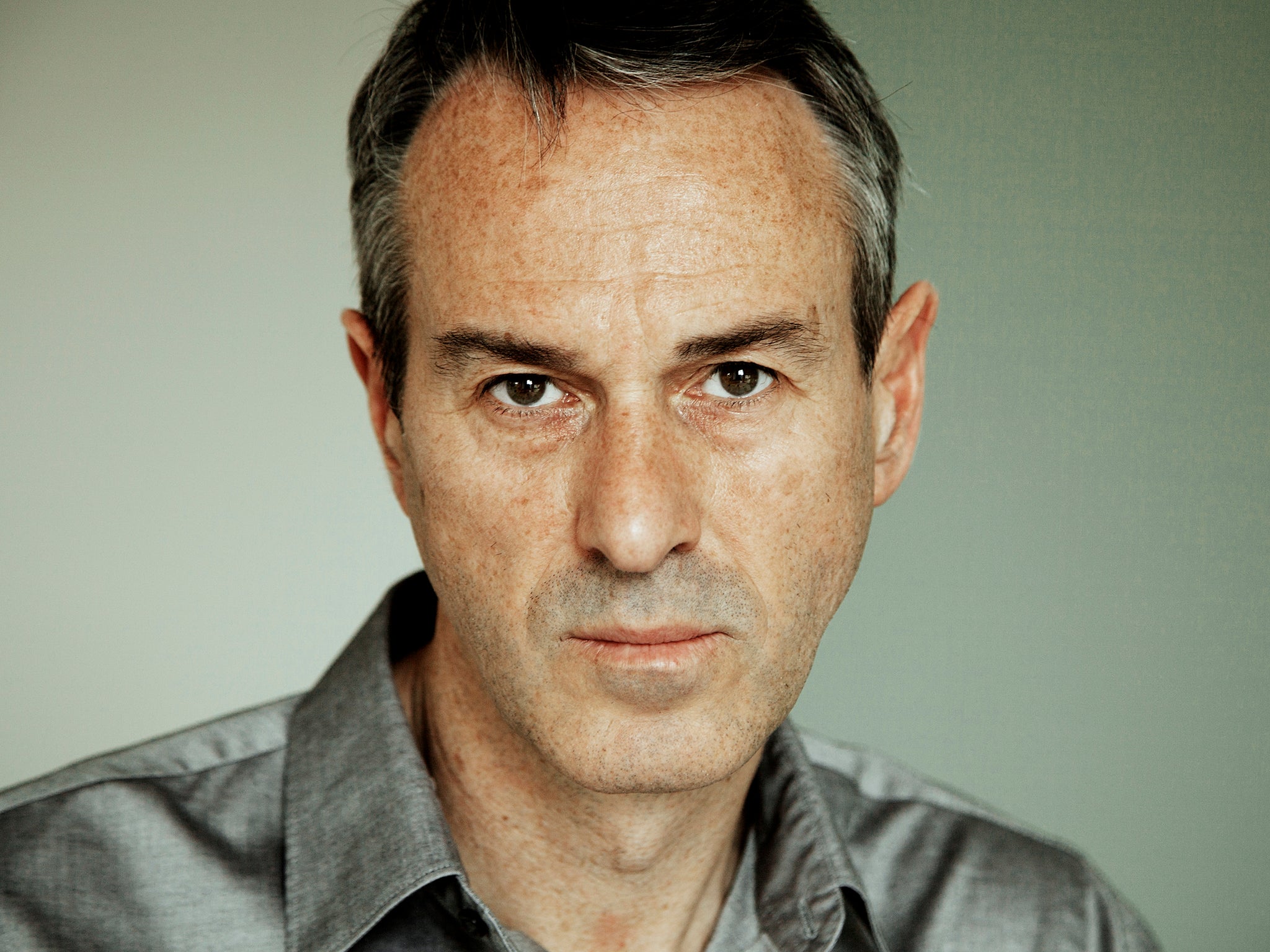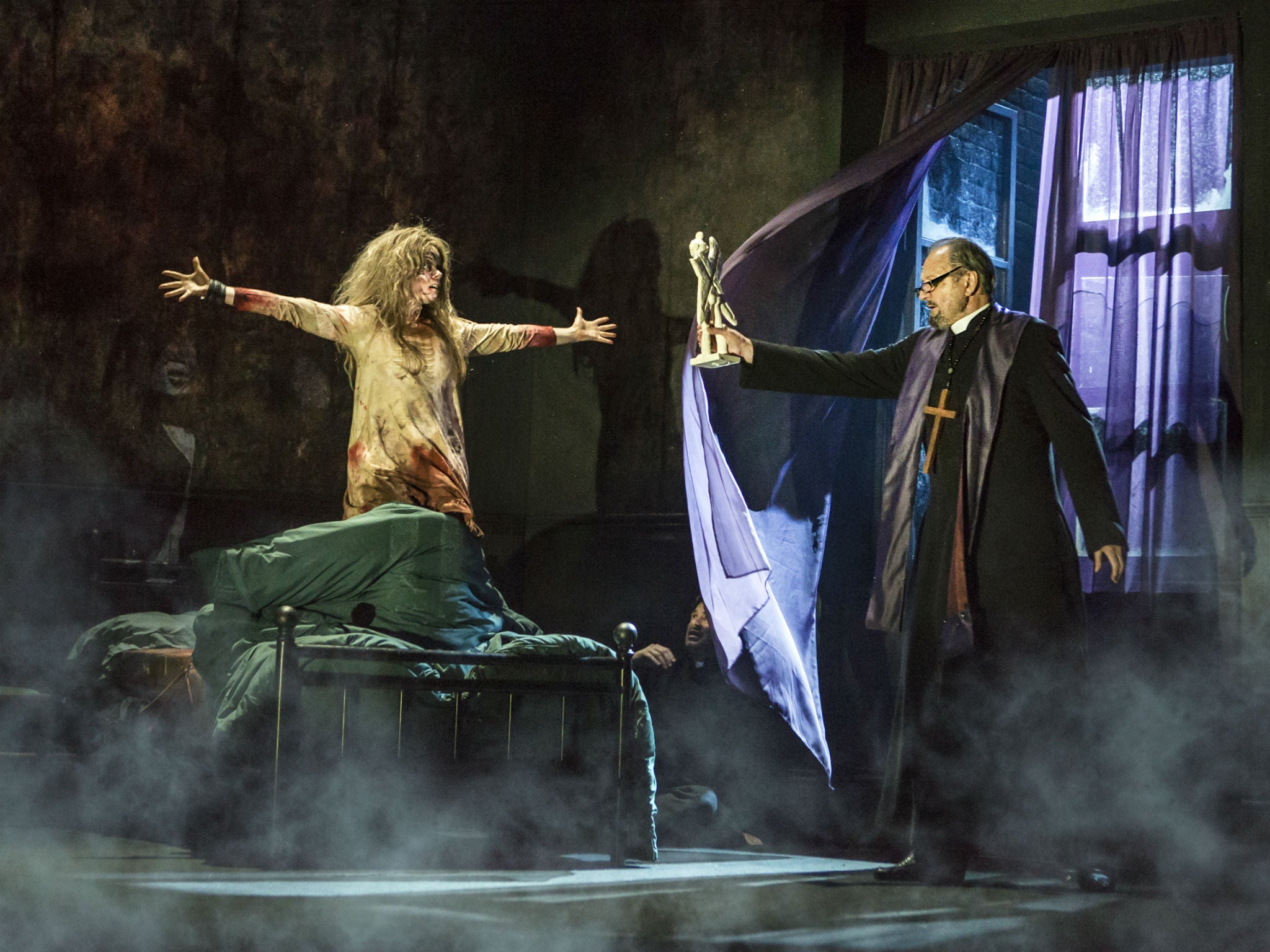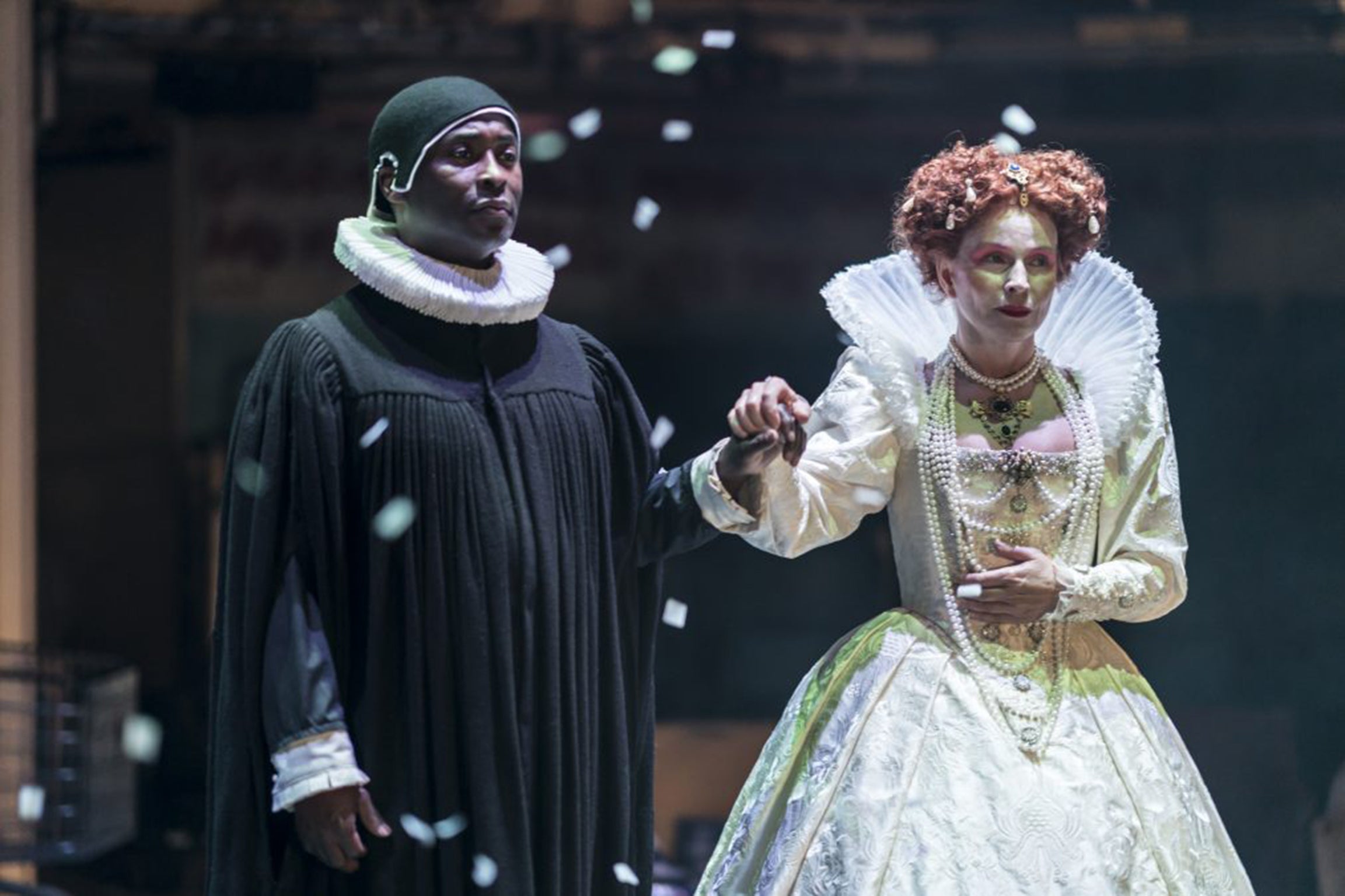Why the sudden rash of movies onstage now?
Ivo van Hove’s version of the 1976 film 'Network' is playing to packed houses at the National Theatre – but it’s just one in a long line of screen-to-stage adaptations happening at the moment

The famous “mad-as-hell” line from Paddy Chayefsky’s Network rings out nightly at the National Theatre, where Ivo van Hove’s adaptation of the 1976 film is playing to packed houses. Its prophetic evocation of a world in which news is showbiz and showbiz is news seems like a perfect fit for our screen-filled, headline-screaming times.
Network is just the latest in a long line of screen-to-stage adaptations that have helped turn Van Hove, a Belgian experimental director based in the Netherlands, into a major name in world theatre. His first film adaptation was Joseph Losey’s The Servant, in 1982; next year, he will direct Cate Blanchett in an adaptation of Joseph L Mankiewicz’s All About Eve. In between, he has directed some 16 plays derived from movies by directors including Luchino Visconti, Ingmar Bergman, John Cassavetes and Michelangelo Antonioni.
Van Hove’s signature style is itself cinematic: The process of producing film and video is often part of the staging, with cameras capturing action onstage and backstage and projecting it on giant screens, a strategy that feels in tune with our age of incessant image capture.
And it’s not just Van Hove; theatre has been experiencing a boomlet of movie adaptations. Derek Jarman’s punk-inflected Jubilee (1978), adapted by Chris Goode, opens at the Lyric Theatre after earning rave reviews at the Royal Exchange in Manchester. Ingmar Bergman’s Fanny and Alexander, adapted by Stephen Beresford, opens at the Old Vic. Theatrical versions of Jean Renoir’s The Rules of the Game (1939) and Visconti’s The Damned (1969) have been playing in repertory at the Comédie-Française. The Exorcist has been running in London’s West End since October. And in Vienna, Krzysztof Kieslowski’s monumental, 10-part The Decalogue, condensed into a two-and-a-half hour play, is being performed by the Volkstheater. (Originally made for television, the series found an international audience at film festivals.)

Why the sudden rash of movies onstage now?
Movies have long been a birthplace of Broadway musicals, and they continue to provide lucrative revenue streams for big studios, looking hard at their back catalogues for the next big thing. But the stakes are different in theatre, where even a successful production is unlikely to run more than a few months, and where the choices of material are markedly less commercial, mostly derived from European art films. (Network and Simon Stone’s 2016 adaptation of Woody Allen’s Husbands and Wives are notable exceptions.)
“I think what has happened over the past 10 years or so is that we’ve stopped having the idea that theatre is essentially a literary form,” Goode says. “I think we’ve started to ask: what else can provide the genesis of a stage production?”
Goode says he had initially been resistant to the idea of working from film sources because of a “cultural misunderstanding” of the roles of theatre and film. “We think either film is like theatre with better special effects, or that theatre is made by people who can’t afford a film yet,” he says. “And you are setting yourself up for a disappointment one way or another because you can’t re-enact what an audience loves about a film.”
He adds that he was also often sceptical of the motivations for choosing well-known films as sources for the stage. “It can be a way of hooking an audience who are already familiar with the material, and that can feel like convenience food; too much of the lifting is pre-done.”

Goode says he had long been using Jubilee as “an example of what film can show us about theatre spaces,” and began to think about transforming it into a stage work as the movie’s 40th anniversary approached. “There is a literacy to our interactions with film and the screen today, and I think it has made theatre artists more able to think critically around how film communicates,” he says. “It’s a really different grammar to the novel.”
Network’s Van Hove says, “I used to be a real film freak when I was young.” And, he adds, film scripts often dealt with themes he couldn’t find in theatre texts: “Visconti’s Rocco and His Brothers, which I did a few years ago, is a fabulous script about immigration and integration. And I have never found a text as extreme on the subject of death as Bergman’s Cries and Whispers.”
Asked why he thought film was such a popular theatrical source now, Van Hove says that theatre “is very good at having an open mind”. And perhaps, he adds, his example has inspired others to follow suit. “People are always predicting the death of theatre,” he says, “but I think it will be one of the most important art forms of this century if it keeps its identity as a live event. You can watch a movie at home now on a screen almost as big as in a cinema, so why leave your home? But live theatre, with the engagement between audience and performers, is a different thing.”
Christiane Jatahy, the Brazilian director whose Rules of the Game offers an update of the storied Renoir film, says she thought that, for the generation now in its forties and fifties, cinema was a repository of memory and images. “The difference with books is that when you use this material, it’s not only about the story, but the images the audience have from the film,” she says. “Maybe this challenge provokes ideas about creation, and this is interesting for directors.”
Jatahy adds that she thought it was important to make cinema itself part of the dramaturgy of her play. “Not just to create images or set, but how to build the story,” she says. “In the play, Robert, a protagonist in the film, is totally addicted to cameras and films his guests. So he is Renoir in a way.”

Our familiarity with images, the ubiquity of binge-watching, the daily bombardment of clips on social media; all of this perhaps feeds into a hunger for the human-scale thrills of theatrical magic. (Opera too is currently in love with the movies; a spate of new pieces – Thomas Adès’s Exterminating Angel, Missy Mazzoli’s Breaking the Waves and Nico Muhly’s Marnie among them – show a similar interest in cinematic source material.)
“When we watch film, we know everything can be CGI-ed,” says Beresford, whose adaptation of Fanny and Alexander is being directed by Max Webster. “In theatre, when you make people fly or disappear, there is a genuine marvelling.”
Beresford says he believed that the adaptations of film for the stage reflected the current confidence of the art form. “Some people will tell you that it’s a symptom of an impoverished, commercially driven theatre, but I think theatre has realised it can be a medium for big spectacle,” he says, pointing to the work of Robert Lepage, Robert Wilson and Matthew Bourne. “The idea of theatre cannibalising film materials and the language of film is the sign of a confidence, I think. Theatre is in a robust state; it’s colonising.”
‘Network’ is currently showing at the National Theatre until 24 March (nationaltheatre.org.uk)
© New York Times
Join our commenting forum
Join thought-provoking conversations, follow other Independent readers and see their replies
Comments